-
Car Reviews
- All reviews
- Midsize SUVs
- Small cars
- Utes
- Small SUVs
- Large SUVs
- Large cars
- Sports SUVs
- Sports cars
- Vans
Latest reviews
- Car News
-
Car Comparisons
Latest comparisons
- Chasing Deals
Appealing to look at, hewn from quality materials, assured on the highway and surprisingly fun on a twisting road – the Polestar 3 feels like it might be worth its high price
Polestar doesn’t want to be a Tesla rival anymore. In that sense, the Model 3-fighting Polestar 2 was an aberration. Having moved out, in its own words, of parent brand Volvo’s household, the Swedish performance offshoot will now be targeting…Porsche.
That’s quite the aspirational leap. When the sole Polestar model on Australian roads – the lift-backed sedan ‘2’ – kicks off at just $62,400 before on-road costs (until June 30), the considerable jump up to the $132,720 ‘3’ on test indicates a high degree of confidence.
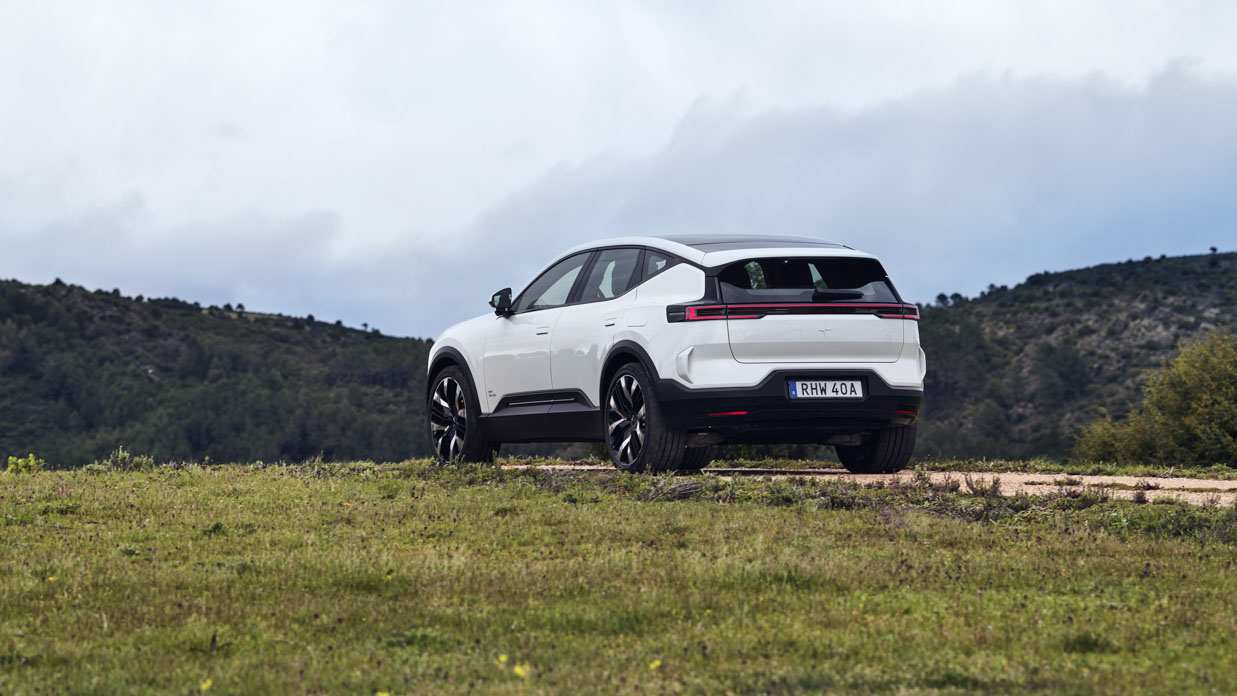
Adjacently, another model – the Polestar 4 that splits the ‘2’ and ‘3’ on size – will join the lineup soon. The ‘4’ also splits the difference on price, with a fairly sparsely-equipped base model designed to attract Australia’s federal EV incentives priced from below $90,000 driveaway.
Product planners for the flagship ‘3’ large SUV weren’t chasing incentives, and there is no concession to affording buyers a stripped-out variant to save costs. The ‘3’ is big, powerful, and expensive, although a slightly cheaper single-motor RWD version is coming later.
Rivals for this 4.9m-long but refreshingly low-roofed crossover are, Polestar senior executives tell us, the Porsche Cayenne (petrol for now, EV expected late in the decade) and EVs like the BMW iX, Audi Q8 E-tron, and the Mercedes-Benz EQE SUV.
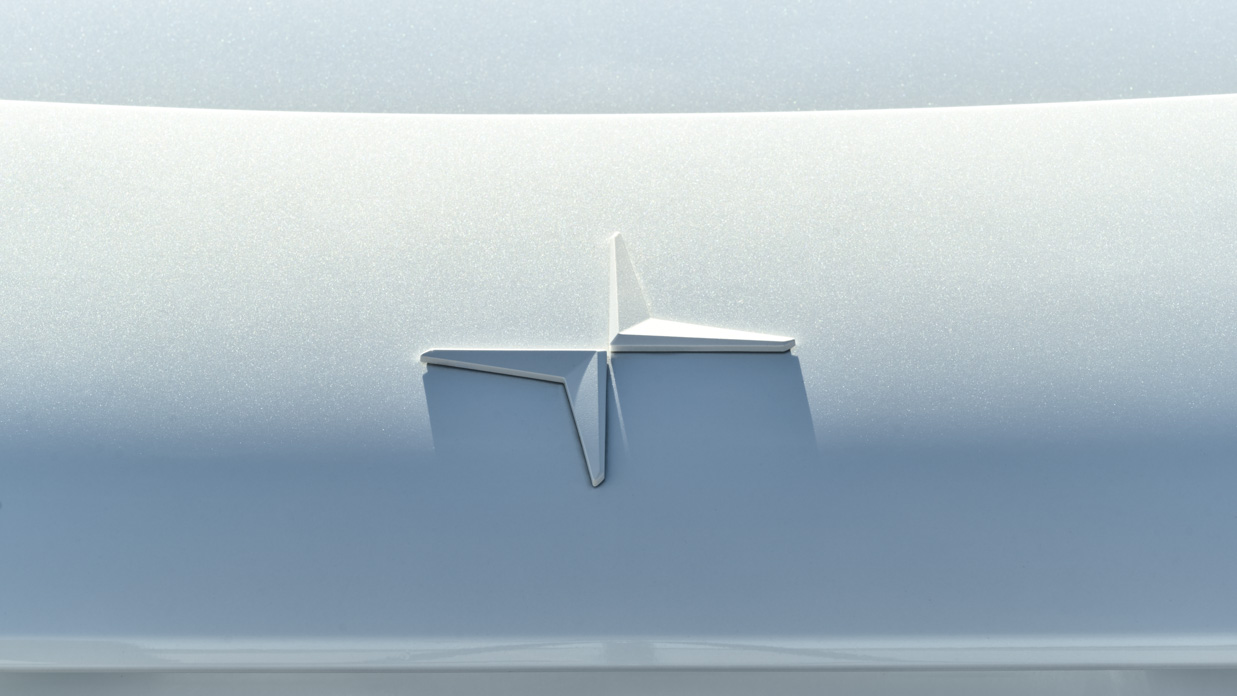
Until last decade Polestar was nestled within the Volvo brand as a sort of AMG or M department, but Volvo itself never really priced its cars to seriously take on such big names.
So, is the Polestar 3 good enough to support luxury dreams? Is it a Porsche, M and Audi Sport fighter?
In a word: yes. But our nodding will be reserved until we can test the big bus on Australian roads, where our chopped-up blacktop surfacing really cleaves good cars from great ones.
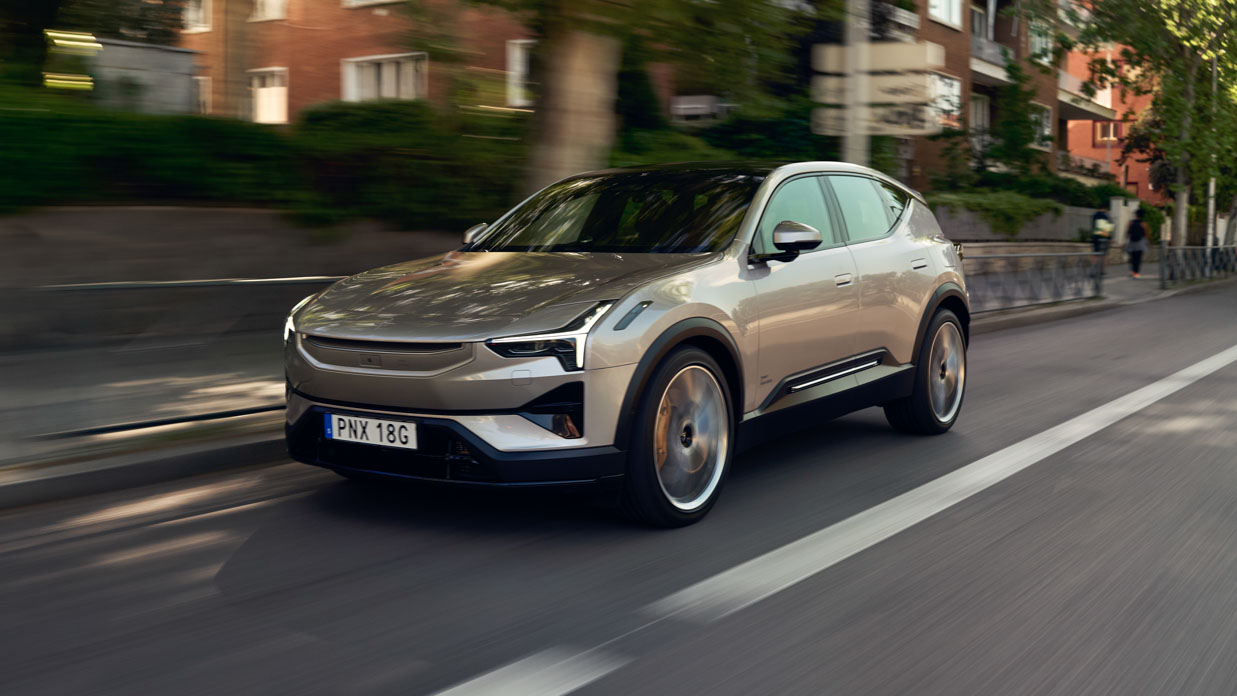
The rival set presents a mixed challenge. Porsche’s recently updated Cayenne is an easy nod – even if full electrification isn’t available. The BMW iX looks odd but it’s great to sit in and drive. The Audi Q8 E-tron is handsome. Mercedes? Well, the EQE SUV is forgettable and not very attractive.
Polestar basically comes down the middle of the set. Like the Audi Q8, the ‘3’ is a conventionally good-looking wagon-bodied SUV with a chiselled face, long roof and strong shoulders. It does not follow Benz (or Tesla) in slackening its lines to chase efficiency at all costs.
Like the Q8, the Polestar 3 uses a heavily adapted form of a platform that used to underpin combustion and hybrid vehicles. SPA2, shared with the forthcoming Volvo EX90, is a 400-volt architecture but there are few compromises: 250kW peak charging speeds and a frunk come standard.
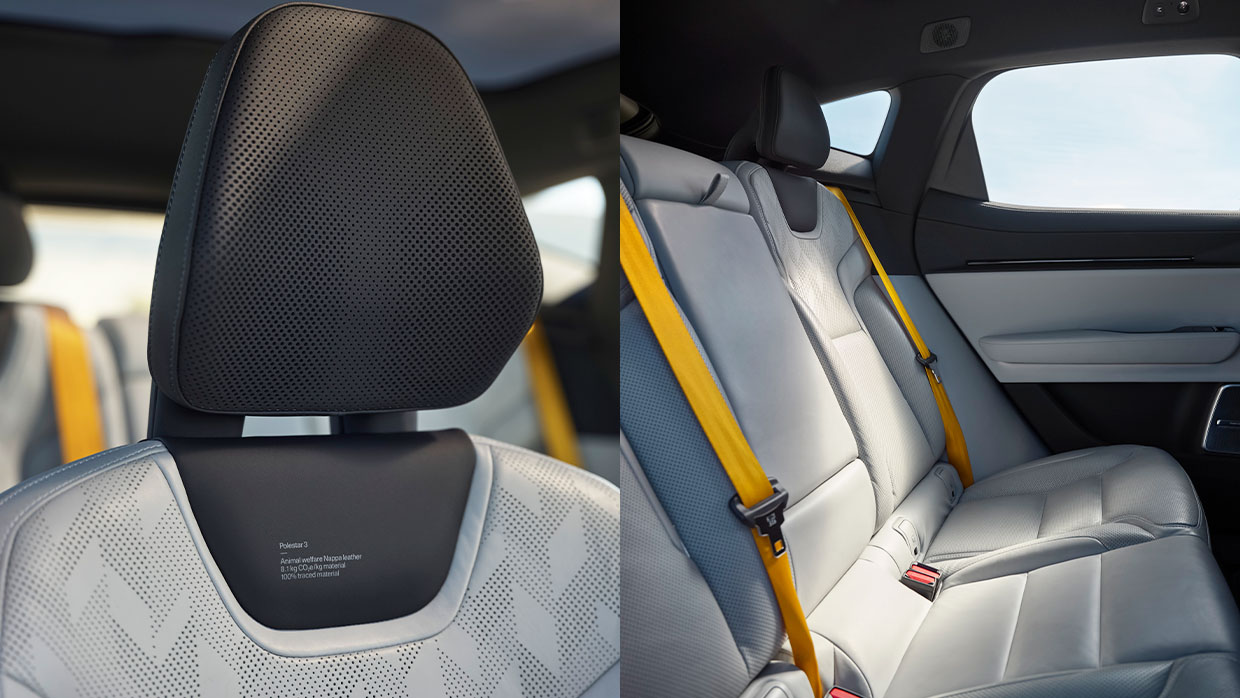
Speaking of the EX90, Polestar designers made a bold – but in our view wrong – choice to make the ‘3’ a strict five-seater. As if anticipating dissent, executives assertively affirmed (without prompting) on our recent first drive that the ‘3’ would “never” be a three-row vehicle.
As you’d expect, the Volvo will be. There’s nothing wrong with a big five-seater per se – the Volkswagen Touareg does something similar vis-à-vis the seven-seat Audi Q7 – but the Polestar is an undeniably large and long SUV with stunted practicality.
There’s a sense that the ‘definitely not seven seats’ decision was settled fairly late: the voluminous rear seats were pushed back to liberate more legroom…but back-seat passenger heads now sit behind the chunky C-pillars, limiting visibility. Boot space is also remarkably mid, at just 484 litres.
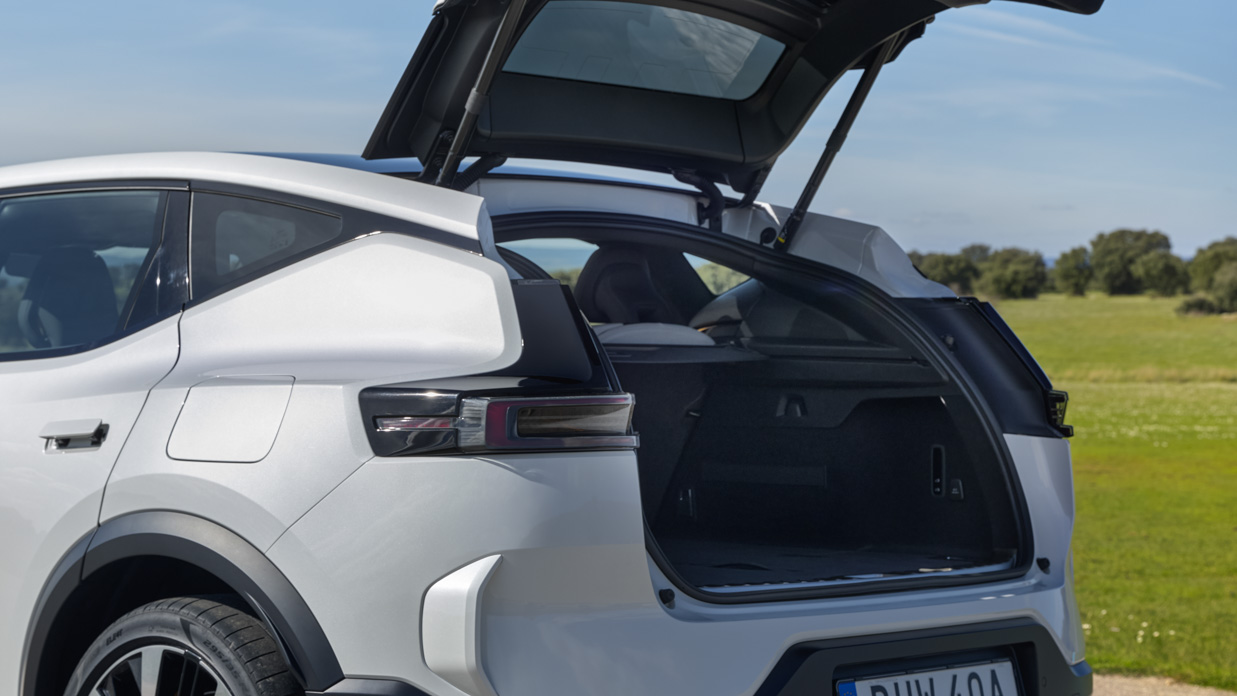
Still, there is no denying that those seated in the back – in Australia, mostly very fortunate children – are well accommodated with seriously comfy seats with available nappa-trimmed pillows, vast legroom, plenty of headroom, air vents and good thigh support – though no inbuilt sun shades.
Like those in front, aft passengers in the ‘3’ sit beneath a massive, standard-fit glass roof. These are a bugbear in Australia but at least the pane capping this Polestar is well-tinted and we weren’t bothered by the heat on a warm, 26-degree Spanish day. But what will 40 degrees be like back home?
Huge glass rooves probably make great sense in home-market Sweden, providing some passive winter warmth, but in so many of the world’s markets they create unwanted heat and light for much of the year. We still prefer a solid top with an available (optional) smaller sunroof.
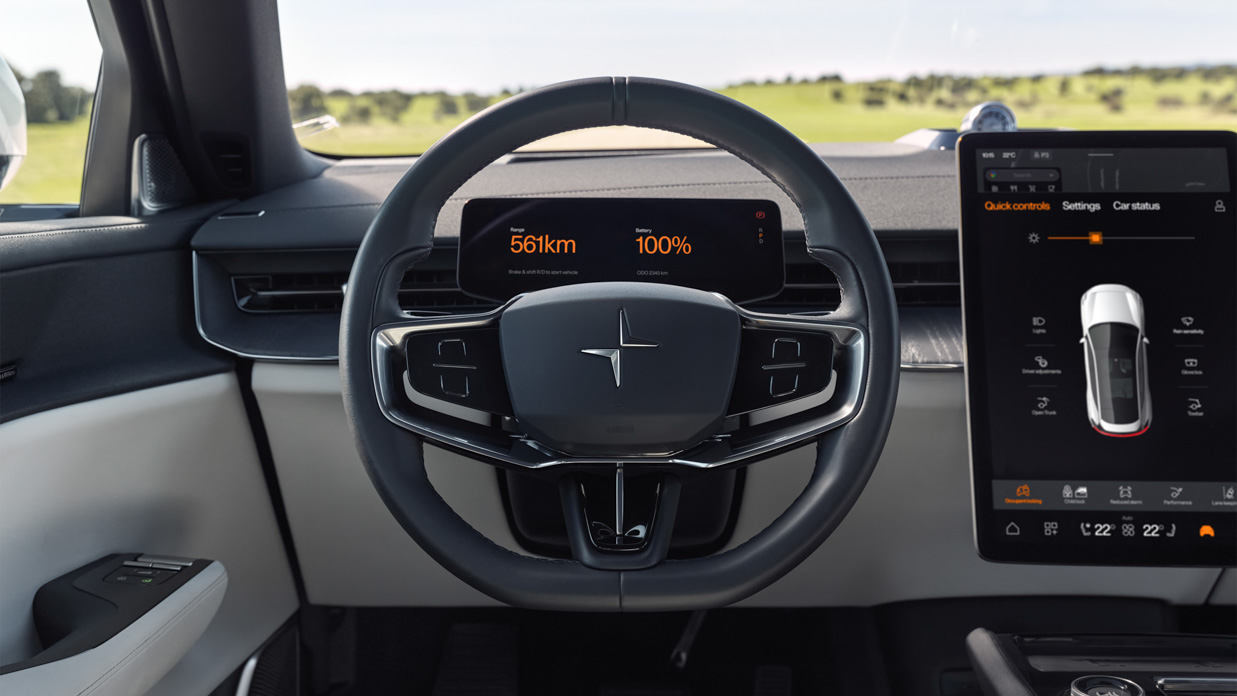
Beyond these picky points we appreciated how much of the Polestar 3 feels like a conventional car – not unlike a sportier, pointier, quieter evolution of the outgoing Volvo XC90 that continues to be one of the best large SUVs out there despite getting old.
It starts with conventional exterior proportions. Cab-rearward with a long dash-to-axle ratio, the ‘3’ has a muscular stance and the surprisingly low roofline mean that the Polestar sits in an attractive midpoint between the aforementioned XC90 and, say, a V90 Cross Country wagon.
Normalcy continues when you enter the cabin – you sort of just slide in thanks to the height. Superb seats are sourced directly from Volvo and, apart from a redesign of the chair adjustment controls nobody wanted (since ditched on the Polestar 4), the seating experience is phenomenal. The pews are among the best in any vehicle.
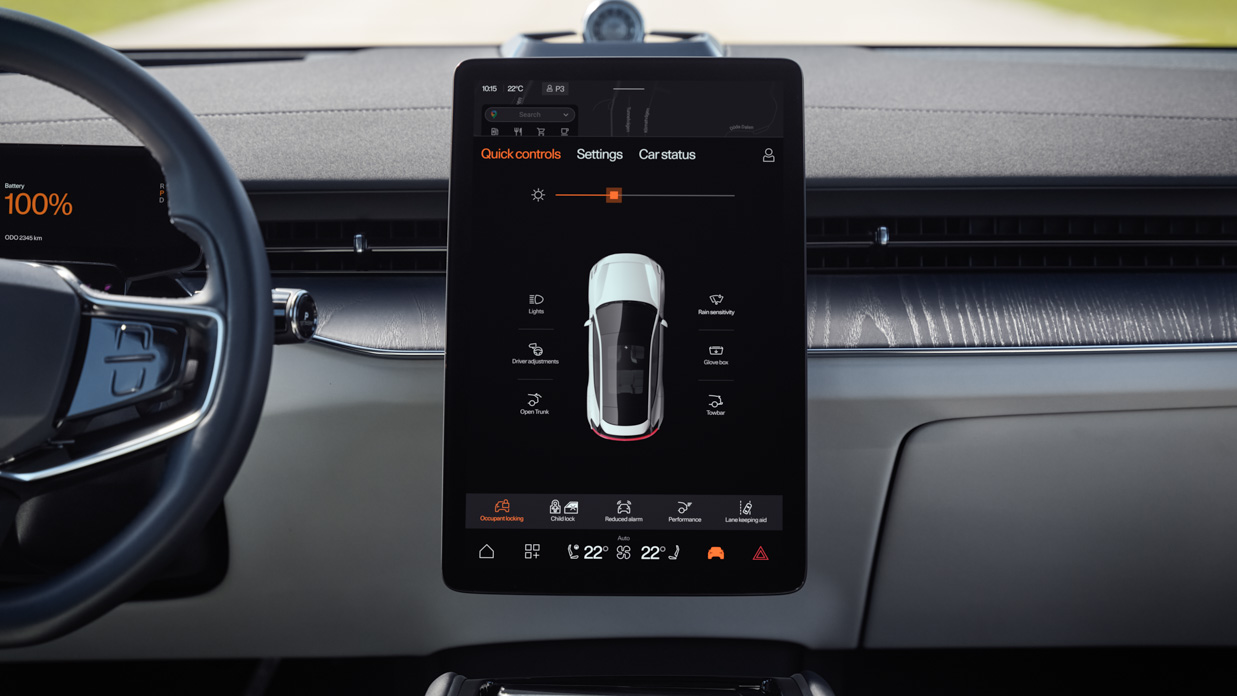
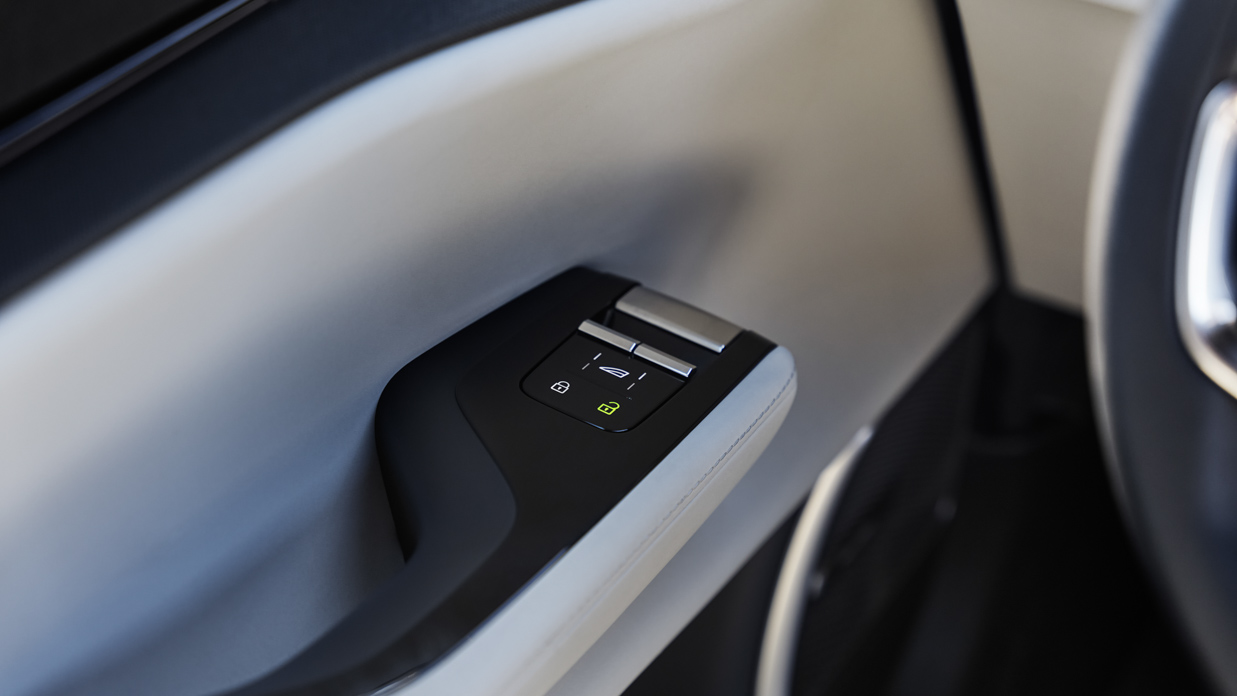
At the entry level the seats are trimmed in vinyl, which feels OK but not luxurious. You will want one of two upgrades: a $1700 wool upholstery (sadly available only in charcoal), or ‘animal welfare’ Nappa leather sourced from high-end supplier Bridge of Weir in Scotland.
Our tester had zinc (light grey) nappa: very plush and befitting of the price. But ticking this standalone box increases the already eyebrow-raising cost of the ‘3’ considerably. Strict tracing and sustainability requirements for the leather mean opting for hide adds $7500 to the ticket.
Tech-wise, the cabin of the ‘3’ is a mixed bag. The large vertical screen might be oriented the wrong way (arguably) but the in-built Google operating system works intuitively and there is Apple CarPlay support. A slim screen ahead of the driver adds important at-glance info: speed, range, maps.
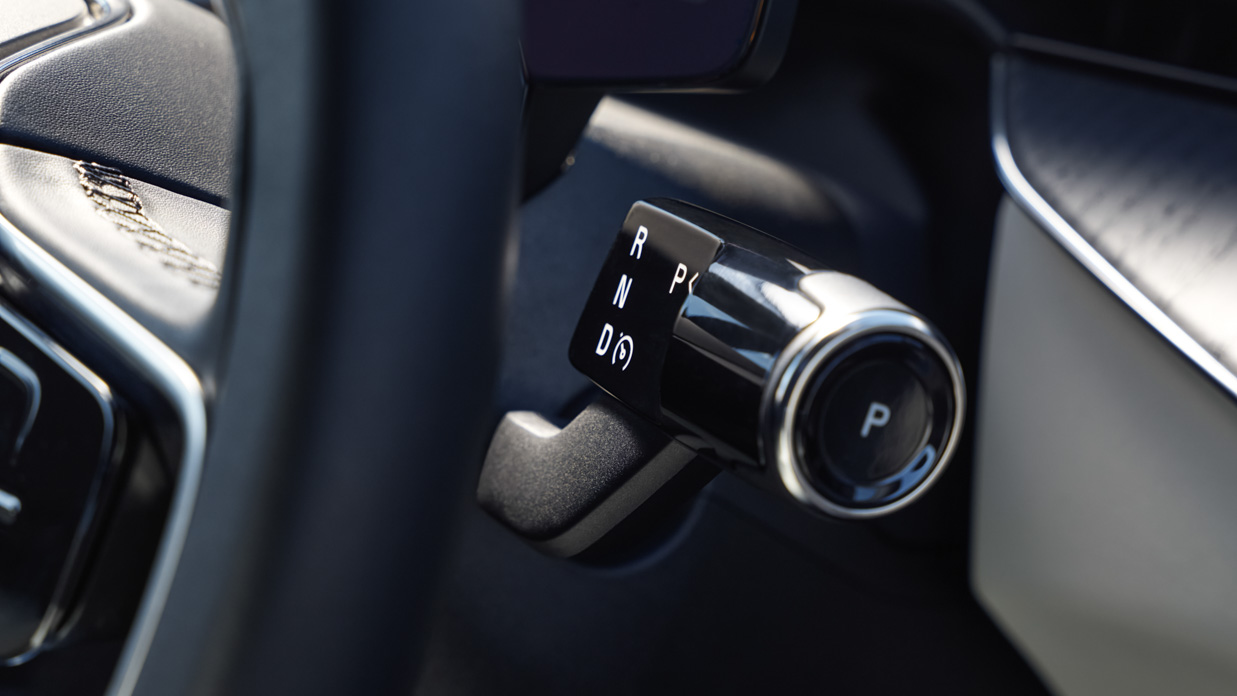
But the control interfaces are convoluted. The steering wheel’s buttons are not illuminated or marked in any way – you’ll need to spend a few hours learning what their mysterious toggles do. And various drive mode, climate, and assistance settings are buried in touchscreen menus.
Polestar is hardly alone in ramping up cabin control difficulty in recent years, and the brand does deserve credit for at least making the screens bright with large touch targets, but a few more redundant physical buttons would go a long way to reducing frustration (and probably improving safety).
Still, with Tesla ditching indicator stalks and gear selectors we should probably be grateful the Polestar 3 retains both…
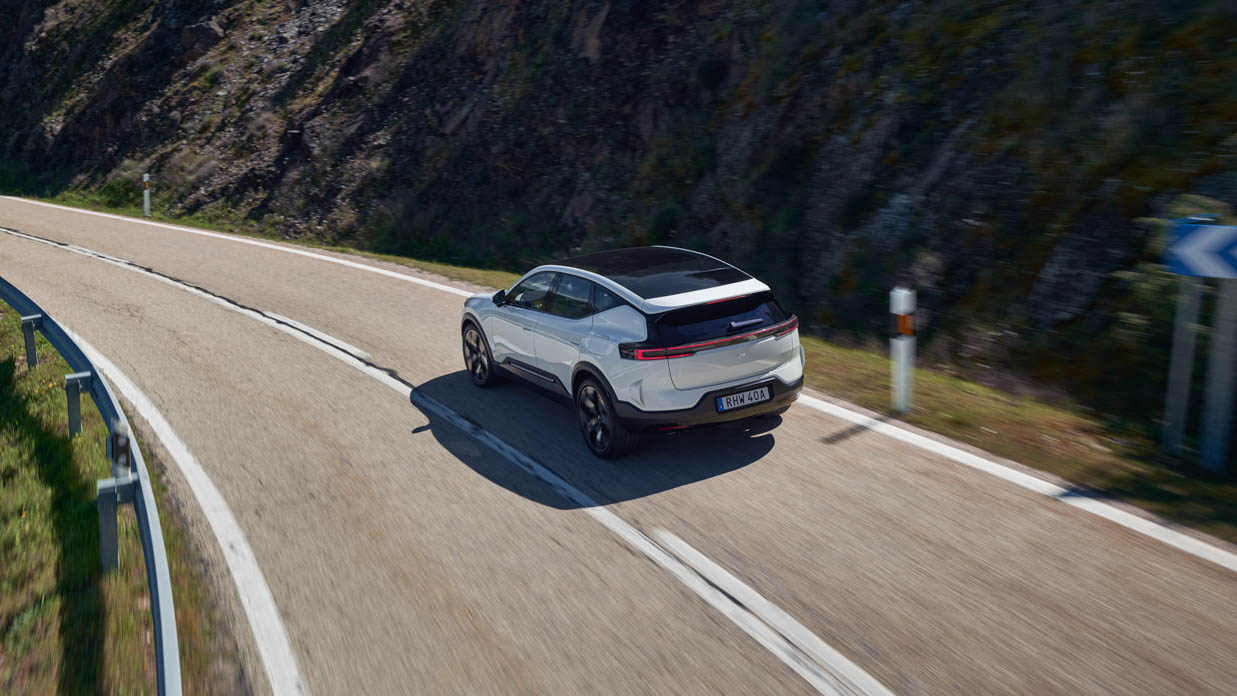
Once settled in with a route dialled in to the mountains northwest of Madrid we could give our attention to what the Polestar 3 does really well: the driving bit.
That’s perhaps the biggest indicator that Polestar is serious about growing up and leaving its Volvo roots behind: the dynamics are sophisticated and ready to genuinely fight the Porsches of the world.
Unlike nearly all Volvos, which are comfy and presentable and homely and likeable, the Polestar manages to retain most of those attributes while also being – gasp – fun to drive.
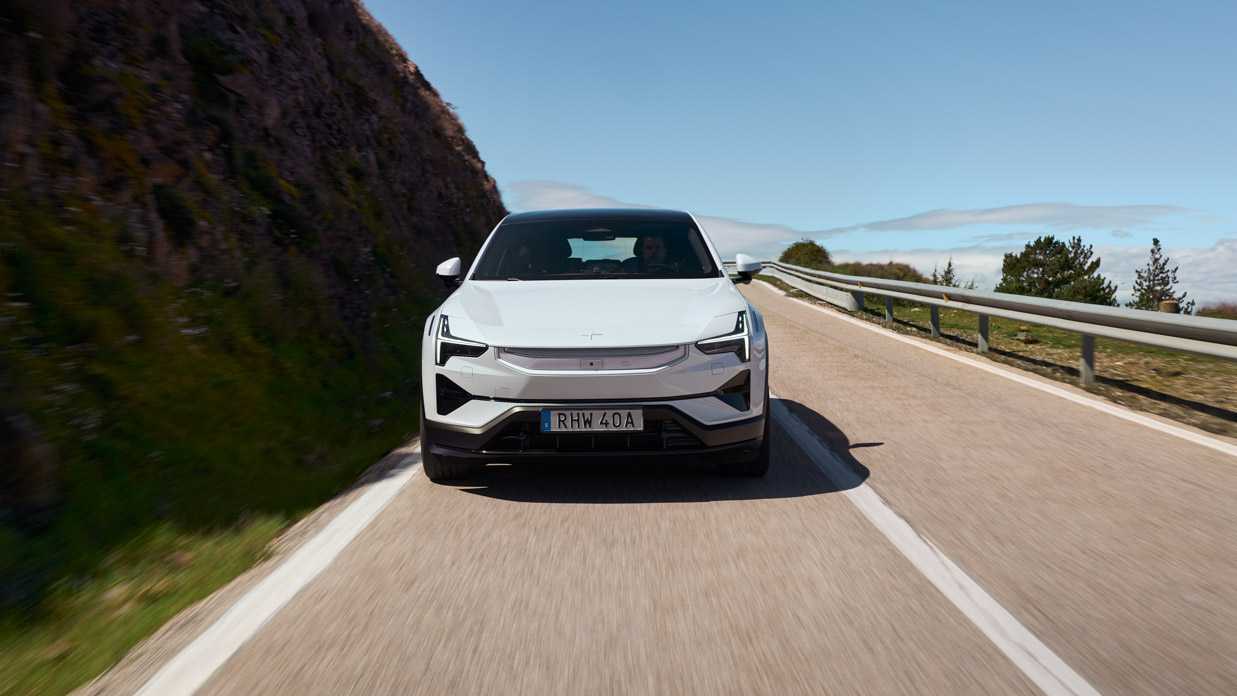
The experience begins with seductive motor take-up tuning that, even among refined EVs, sees the Polestar 3 slink off with a noticeable silky richness underfoot, while the blended brake pedal tune – mainly noticeable if regen is turned off – is expertly calibrated.
Then there’s the steering. Weighting is adjustable but it seems like the engineers liked ‘normal’ the best: it’s light (ish) but gorgeously linear with an ideal ratio. The control surfaces of the ‘3’ are liquid-like, making this a shockingly intuitive vehicle to pilot.
Next is the Polestar 3’s serene gait on the motorway: the dual-chamber adaptive air suspension keeps the body level, rounding imperfections and expansion joints in a manner that is more Bentley than Volkswagen. At 140km/h on Euro motorways it’s relaxation central.
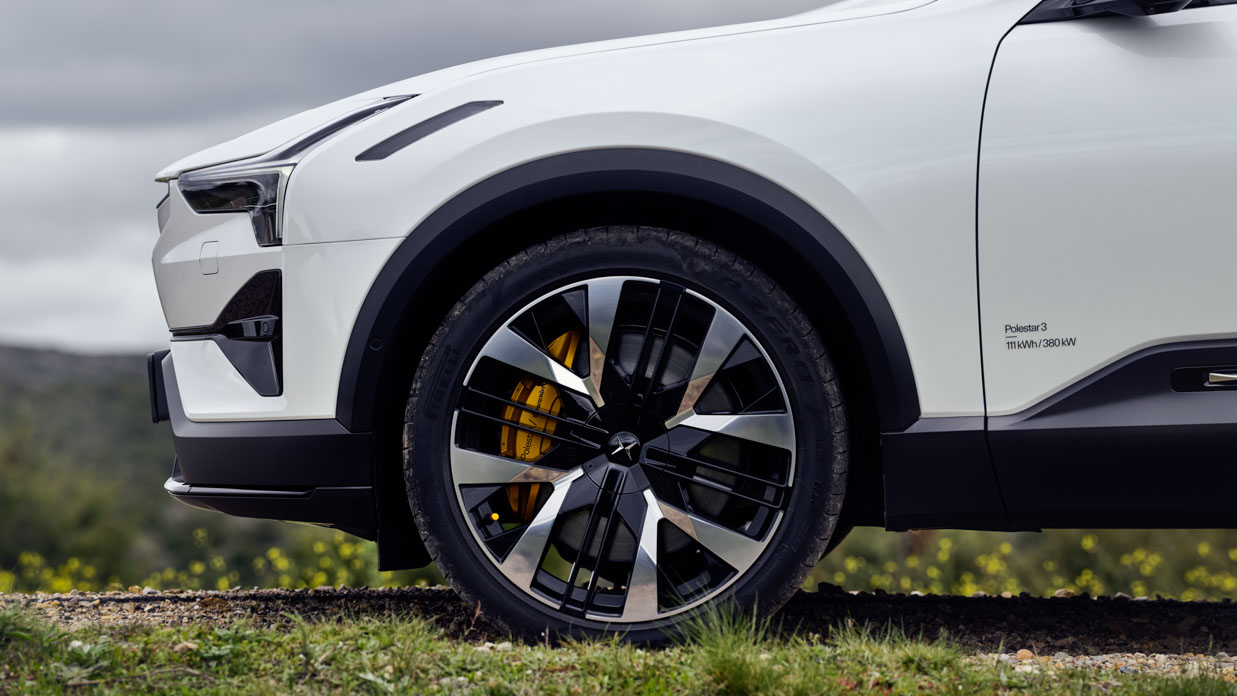
Our tester was equipped with unnecessarily large 22-inch wheels which could be felt to induce a little more firmness on less perfect surfaces, though. We’ll see in Australia but we suspect the base 20s, or 21-inch options that come with the ‘Pro’ pack, will be a sweeter balance.
For now, all Polestar 3 vehicles – worldwide – feature the same dual-motor, all-wheel drive powertrain with 360kW of power and 840Nm of torque, but the outputs are dialled up marginally by selecting a sportily-tuned Performance package that we feel just isn’t required.
Later a rear-wheel drive model with something like 200kW of power will lower the cost of entry, but it will also significantly lengthen the AWD model’s 5.0 second 0-100km/h claim.
On public roads, the dual-motor’s acceleration is definitely swift enough though it doesn’t feel unapproachably rapid or frightening.
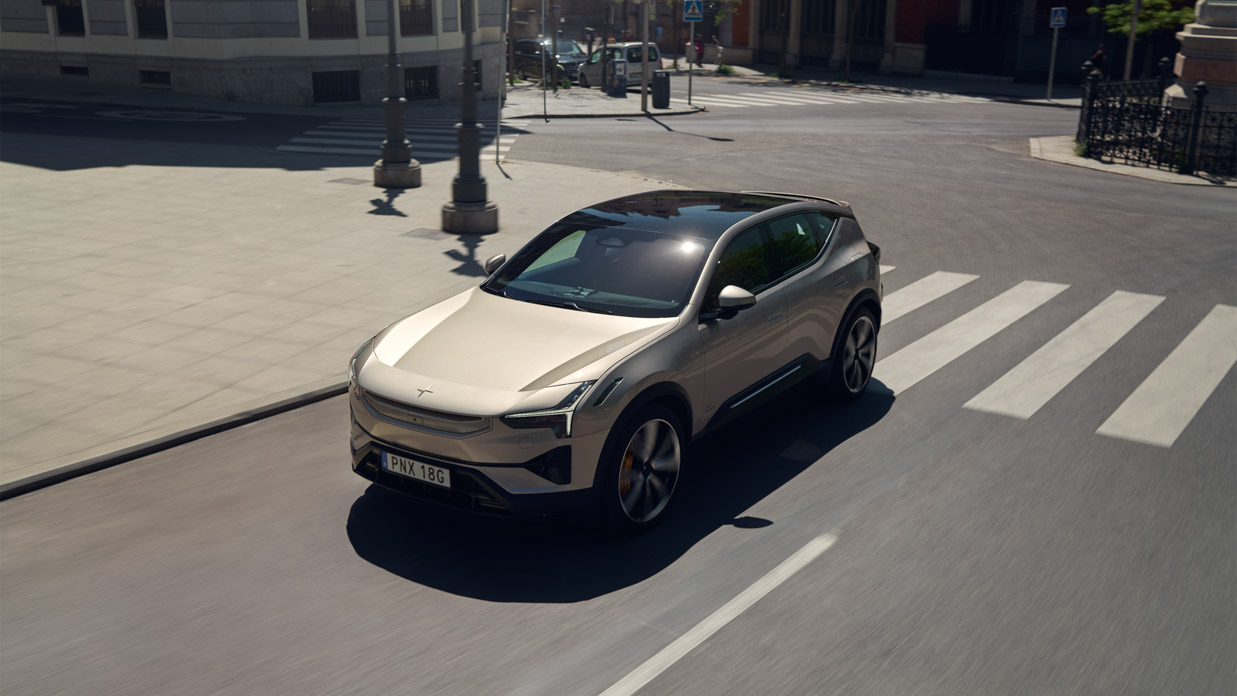
Somehow, despite its considerable mass, the ‘3’ is astonishingly adept in the corners. Actually, beyond adept, it’s downright rewarding and addictive. At an extended lunch stopover we just wanted to get back in and drive – usually a good sign and frankly a rare one in the case of an SUV.
Communicative steering and a keen front end give the Polestar 3 zeal when driving into bends. Good body control keeps things clean mid-corner. And then – if you have flicked it into ESC Sport via the touchscreen – on corner exit, a committed boot can induce some giggle-inducing power oversteer too!
Given it’s big, comfy and serene and – aside from maybe a bit of detected road rumble – refined too, the Polestar 3 thrilled by demonstrating surprising character and keenness to be driven harder.
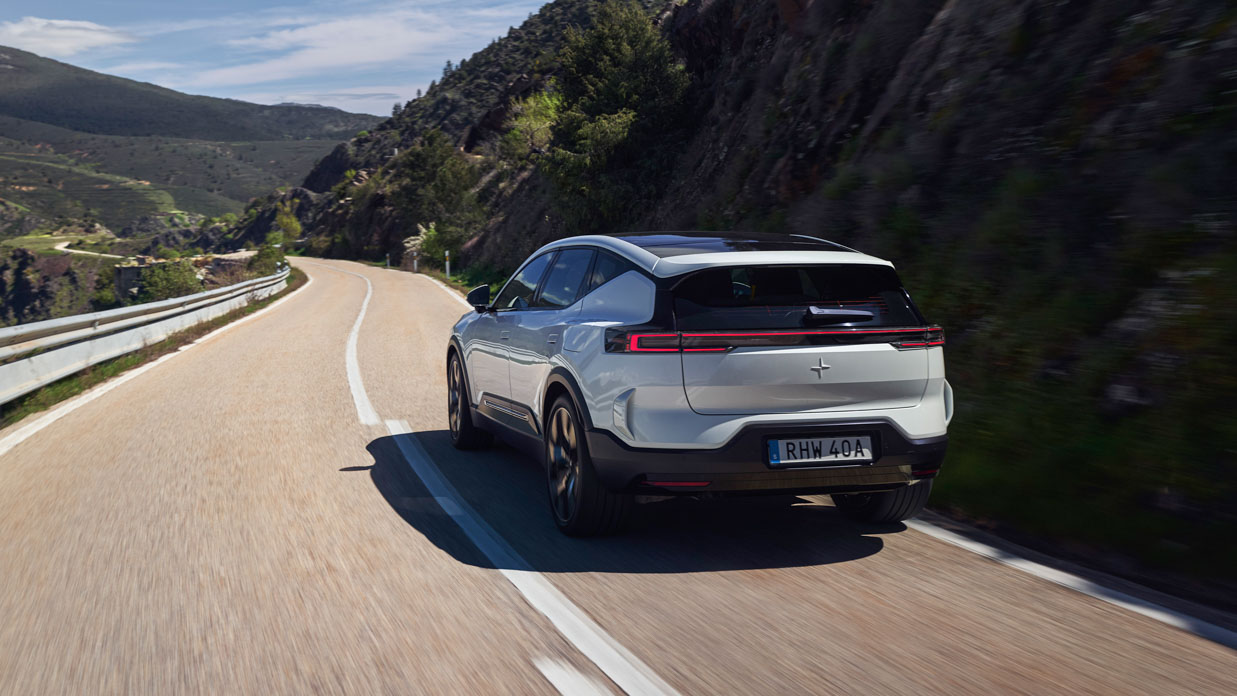
Our mixed driving loop, which admittedly did explore some of this dynamic character, plus some town and motorway driving, saw us record efficiency of about 26kWh/100km – for a disappointing range of 411km from the 107kWh battery.
No doubt the efficiency will improve with more measured driving on slower Australian roads, but by how much? 20 percent lower consumption would still make the Polestar 3 thirstier than many rivals.
At least 250kW peak charging speeds will allow for rapid (by EV standards) road-tripping replenishment, and installing an 11kW wallbox at home would theoretically allow you to refuel the entire battery overnight.
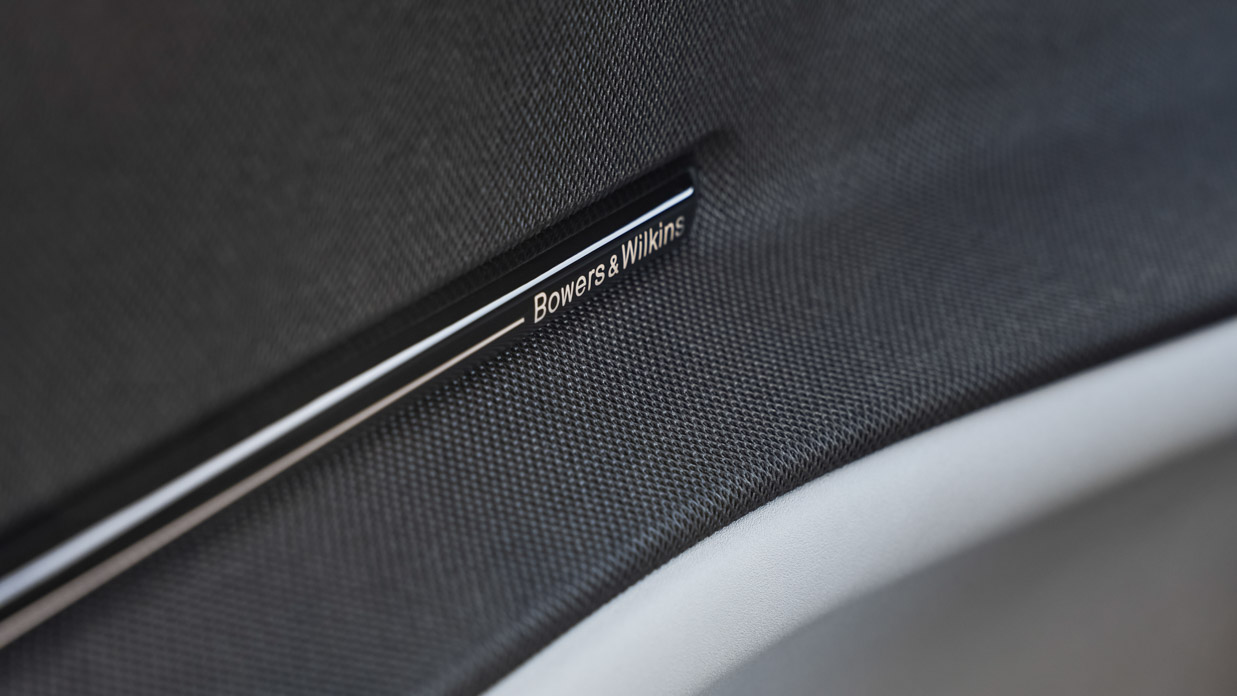
The big question on our minds is whether the dynamic package will all hold up well to the punishment of Australian roads. We aimed for the rare potholes we could find but the Spanish remain annoyingly good at surfacing all manner of routes in some of the world’s slickest bitumen.
There is a question about road noise in the MY24 cars. On the first drive launch, we were only able to drive the MY25, which has added significant acoustic and noise cancelling tech within the desirable Plus package, but there are MY24s on their way to Australia without these sound-deadening features.
Speaking of the Plus pack: we think you’ll want it. Beyond noise cancellation for MY25, it also adds a 25-speaker Bowers & Wilkins stereo with Dolby Atmos – the speakers render music in astonishing clarity. The audio quality is so good that the Plus pack’s $9000 cost is worth thinking about.
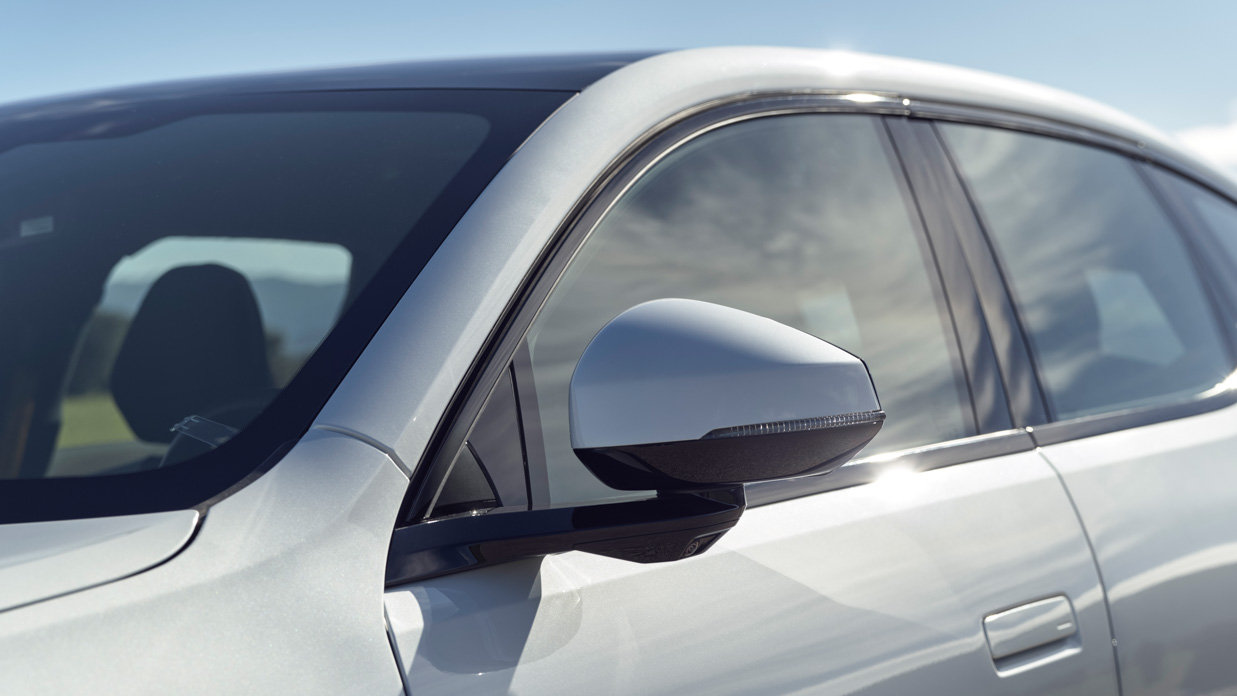
We’d consider the $3200 Pro pack that goes to midpoint 21-inch wheels and adds a bit of trademark Polestar Swedish gold detailing. And the ventilated, heated, massaging nappa leather chairs would be on our list despite their indulgent $7500 tag.
Beyond that? High-definition pixel LED headlights will impress some ($3000) while an electronically deploying and retracting tow bar ($2900) is a nice touch. But at such a high entry price, pinging Aussie buyers $2000 to $2300 for premium paint seems a little cheap.
From sometime in 2025 – if things start running to plan and supplier delays evaporate – a roof-mounted lidar pod will be available in a $7500 pack to unlock higher degrees of autonomous driving when market-specific regulations allow.
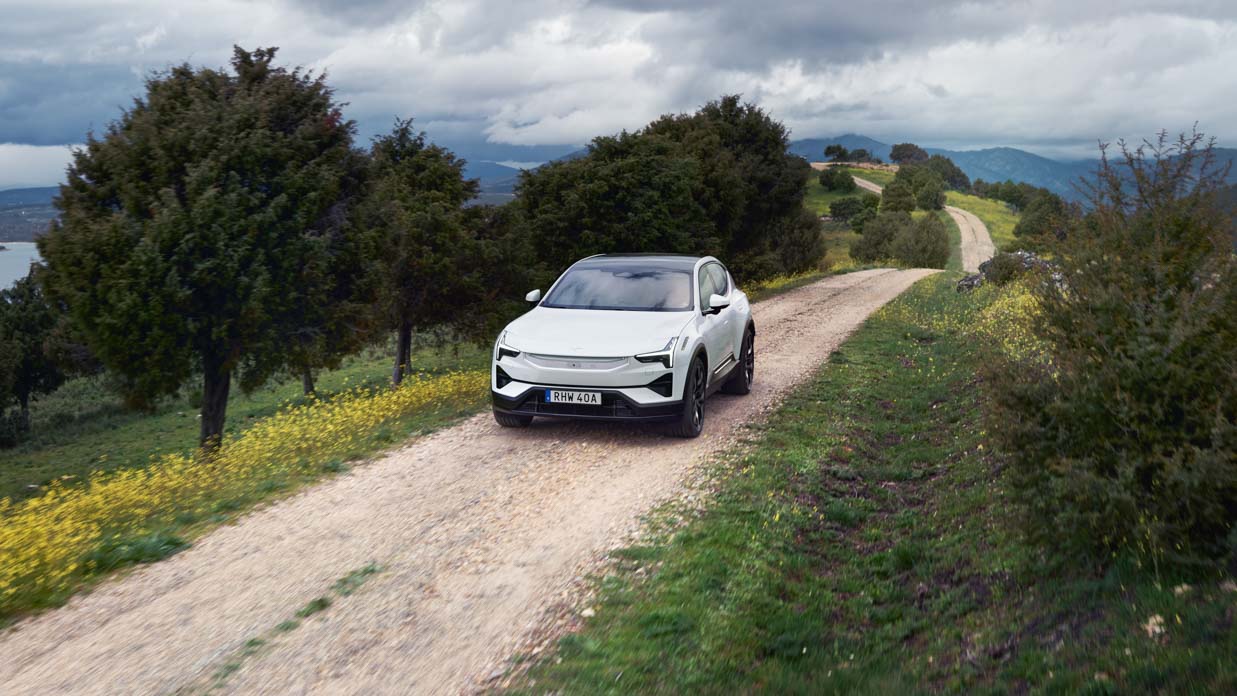
Our ideal spec – midnight blue over Jupiter beige nappa leather, with Plus & Pro packs, leaves little change from $180,000 driveaway.
No matter how you cut it, that isn’t inexpensive – though it does compare favourably with a Porsche Cayenne E-Hybrid (from $175,250 driveaway without options). In that company, when the driving dynamics are this good, and it’s fully electric, the Polestar 3’s initially shocking cost starts to make some sense.
About Chasing cars
Chasing Cars reviews are 100% independent.
Because we are powered by Budget Direct Insurance, we don’t receive advertising or sales revenue from car manufacturers.
We’re truly independent – giving you Australia’s best car reviews.
The estimate provided does not take into account your personal circumstances but is intended to give a general indication of the cost of insurance, in order to obtain a complete quote, please visit www.budgetdirect.com.au. Estimate includes 15%^ online discount.
^Conditions Apply
Budget Direct Insurance arranged by Auto & General Services Pty Ltd ACN 003 617 909(AGS) AFSL 241 411, for and on behalf of the insurer, Auto & General Insurance Company Limited(ABN 42 111 586 353, AFSL 285 571).Because we don’t know your financial needs, we can’t advise you if this insurance will suit you. You should consider your needs and the Product Disclosure Statement before making a decision to buy insurance. Terms and conditions apply.
Indicative quote based on assumptions including postcode , 40 year old male with no offences, licence suspensions or claims in the last 5 years, a NCD Rating 1 and no younger drivers listed. White car, driven up to 10,000kms a year, unfinanced, with no modifications, factory options and/or non-standard accessories, private use only and garaged at night.
^Online Discounts Terms & Conditions
1. Discounts apply to the premium paid for a new Budget Direct Gold Comprehensive Car Insurance, Third Party Property Only or Third Party Property, Fire & Theft Insurance policy initiated online on or after 29 March 2017. Discounts do not apply to optional Roadside Assistance.
2. Discounts do not apply to any renewal offer of insurance.
3. Discounts only apply to the insurance portion of the premium. Discounts are applied before government charges, taxes, levies and fees, including instalment processing fees (as applicable). The full extent of discounts may therefore be impacted.
4. We reserve the right to change the offer without notice.